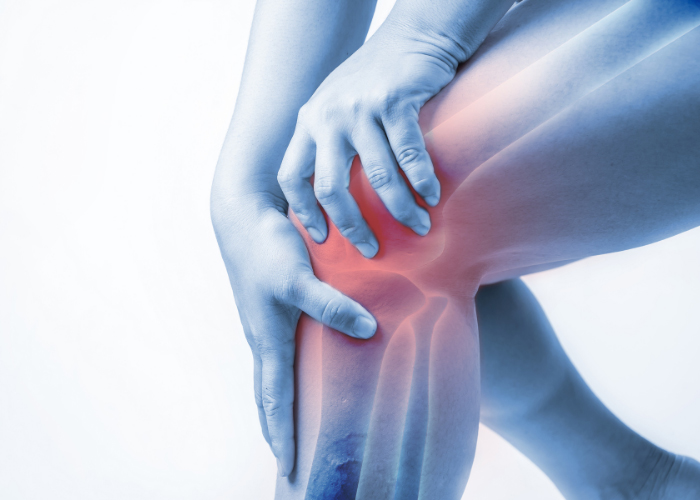Introduction:
Chondromalacia Patellae, often referred to as “Runner’s Knee,” is a common condition characterized by the softening and breakdown of the cartilage on the underside of the kneecap(patella).This degeneration leads to irritation, inflammation, pain during movement.
Definition:
Chondromalacia Patellae is defined by the deterioration of the particular cartilage behind the kneecap. This cartilage normally provides a smooth, low-friction surface for the patella to glide over the femur during knee flexion and extension.
Etiology:
The condition typically arises from:
- Muscle Imbalances: Weakness in the thigh hamstrings and quadriceps can affect the patella’s alignment.
- Patellar Maltracking( Misalignment): The kneecap does not track correctly within the femoral groove, causing excessive friction and wear.
- Overuse and Repetitive stress: Frequent high- impact activities like running, repetitive knelling, jumping or dancing.
- Anatomical Factors: Variations in knee structure (flat feet ,high arch feet) can contribute to abnormal faces on the joint.
- Congenital Condition: poor alignment due to a congenital condition.
Clinical Features:
Chondromalacia Patellae is often associated with the following clinical features:
- Patellofemoral Pain Syndrome (PFPS):Chondromalacia is a common underlying cause of anterior knee pain, aften grouped under the broader term PFPS.
- Inflammation: Irritation within the knee joint can lead to localized inflammation.
- Degeneration of Cartilage: Visible softening, fissuring, swelling and tenderness of the patellar hyaline cartilage.
- Osteophyte formation: Osteophyte formation also occurs after 50%of the patellar articular surface exposed.
Signs & Symptoms:
Patient’s typically experience:
- Swelling or Effusion Fluid accumulation around the kneecap although less common.
- Dull, Aching Pain: Located behind or around the kneecap.
- Crepitus: A grinding, grating or cracking sound when bending the knee.
- “Theater Sign”: Pain after prolonged sitting with bent knees.

Treatment Options:
Treatment typically focuses on reducing symptoms and improving knee mechanics:
- RICE (Rest, Ice, Compression, Elevation): Immediate management for acute or chronic pain and swelling.
- Physical Therapy: Strengthening the hip muscle and quadriceps to improve patellar tracking and stability.
- Activity Modification: Avoiding activities that exacerbate pain.
- Bracing or Taping: Braching can also be used for patient pre- and postoperatively. Taping the patella to influence its movement may provide some short- term relief, but the evidence is varied. A commonly used technique is “McConnell Taping “or Kinesiotaping.
Surgical Intervention:
- Full Patellectomy: This method is only used when no other procedures are helpful, but a significant consequence is that the quadriceps will become weak.
- Chondrectomy: The success of this treatment depends on the severity of the cartilage damage.
- Drilling: Drilling is also a method that is frequently used to heal damaged cartilage.
Conclusion:
Chondromalacia Patellae is a treatable condition. Early diagnosis and c conservative approach involving physical therapy, rest and activity modification are aften highly effective in relieving pain and preventing further cartilage damage.

